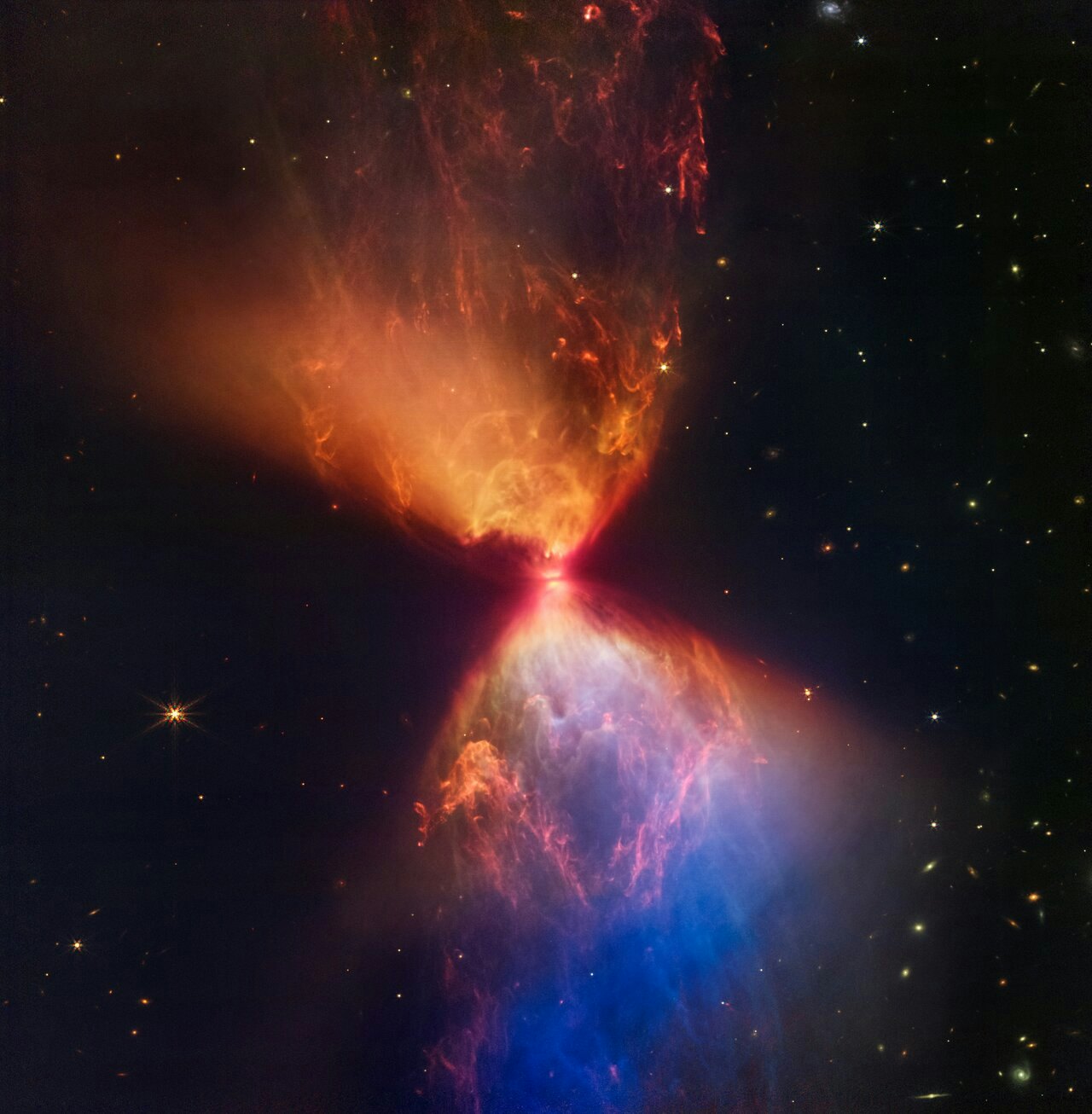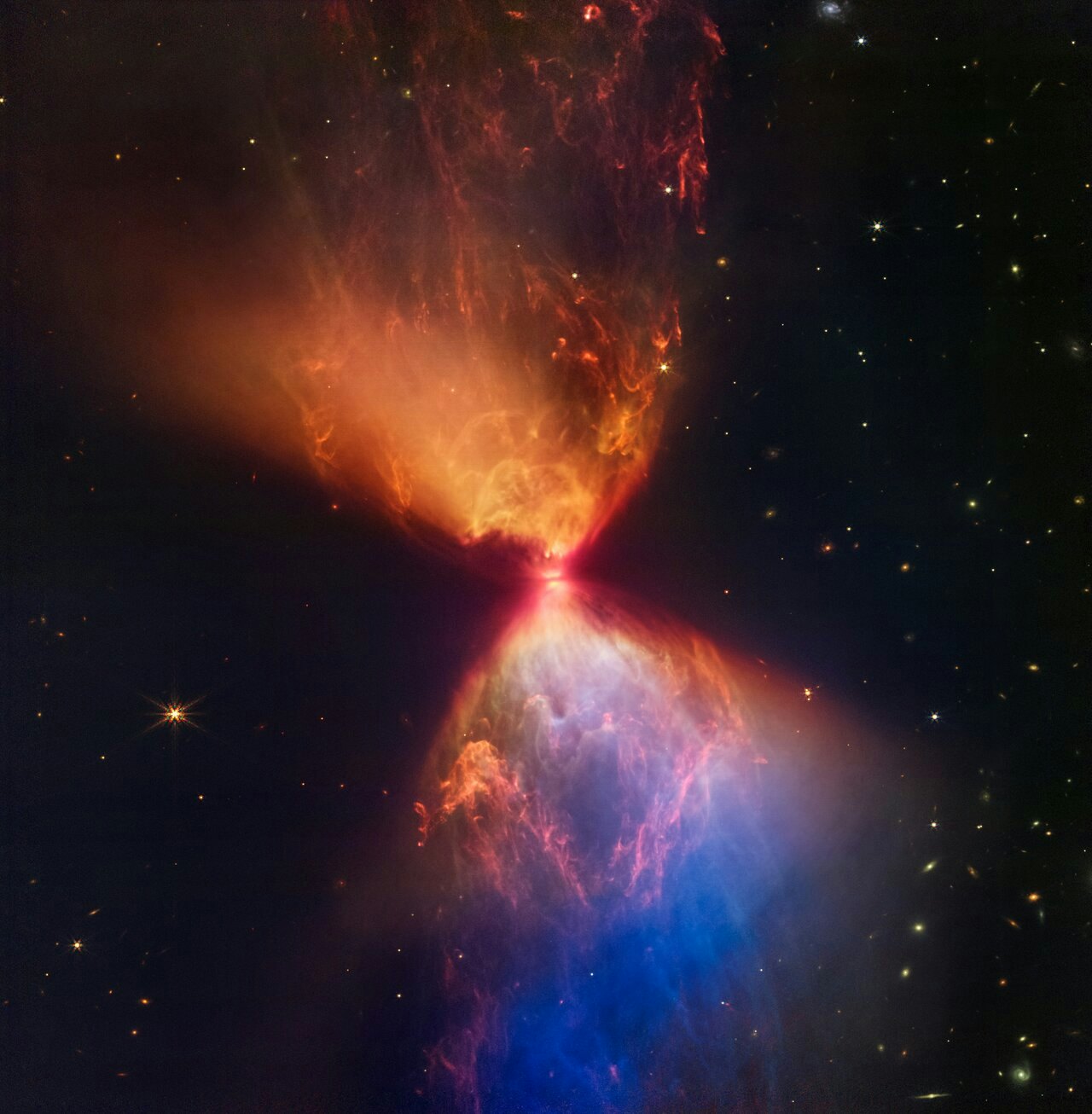
This stunning image from the James Webb Space Telescope reveals what our Solar System might have looked like 4.5 billion years ago when the Sun was still pulling itself together amid a cocoon of gas.
Webb’s NIRCam instrument recently captured this detailed image of the cloudy region around a very young protostar called L1527. Only about 100,000 years old, L1527 isn’t a star yet: it hasn’t fully pulled itself into a proper, stable sphere, and it hasn’t piled on enough mass to kickstart nuclear fusion and start pumping out its own energy. It’s more like “a small, hot, and puffy clump of gas, somewhere between 20 percent and 40 percent the mass of our Sun,” according to the European Space Agency.

But as the latest Webb photos reveal, the young protostar is making an ambitious start.
What’s New — The protostar itself lies hidden behind a thick wall of clouds at the neck of the hourglass-like shape in the photo. However, if you look closely, you can see a dark line across the narrow neck; that’s an edge-on view of the protoplanetary disk, a ring of gas and dust that surrounds the young star and will one day evolve into a system of exoplanets.
Shining out above and below the disk, infrared energy — heat, in other words — from the growing protostar lights up the billowing molecular clouds that are fueling its growth. The dense clouds of gas — mostly molecular hydrogen — around L1527 would be invisible to our unaided eyes, because they block light in the wavelengths we can see. But Webb’s infrared instruments can see these clouds in intricate detail. As the protostar grows, it blasts some material outward, which is carving cavities into the surrounding clouds and sending shock waves along filaments of hydrogen.
Star formation is one of the most important parts of Webb’s science mission. Images like this one, and the data that produced it, will help astronomers understand the conditions under which new stars form and how their growth shapes the molecular clouds around them in ways that either encourage or prevent other stars from getting a start.
What’s Next — Over the next few hundred thousand years, L1527’s gravity will pull in more gas from the surrounding clouds, which will spiral inward until it becomes part of the protostar. The additional gravity of that new material will pull the protostar into a neatly spherical shape. And eventually, all that mass will raise the heat and pressure at its core enough to fuse hydrogen atoms together into helium.
A new star will be born.







